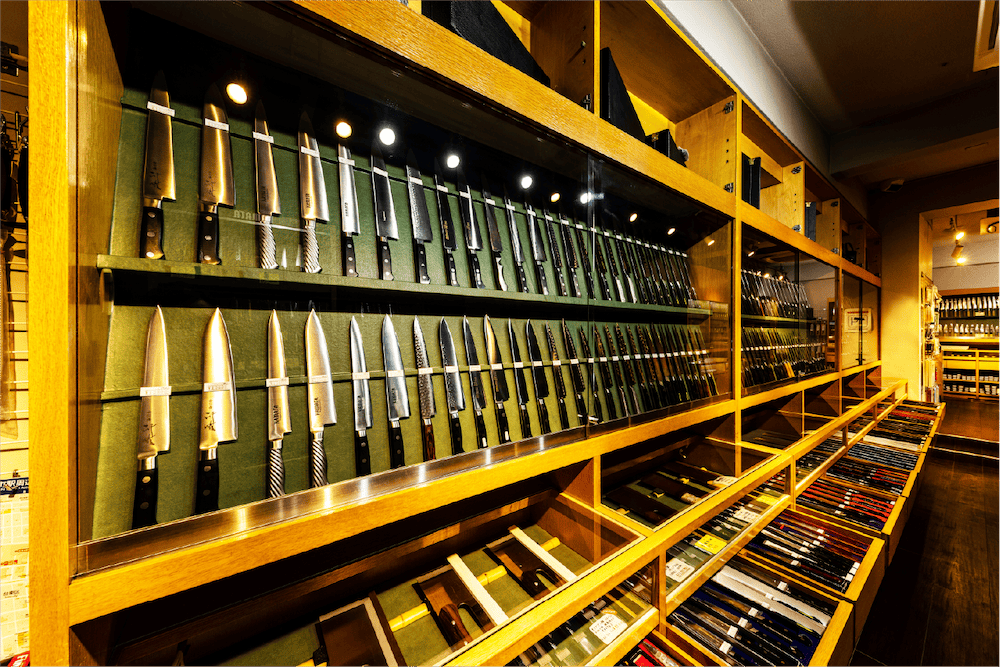“Hon-tanzo” is one of the traditional forging techniques used to make kitchen knives and blades. This technique is used to make the blade portion of a knife and plays an important role in improving the strength and sharpness of the blade.
The features of this forging are as follows
- Forging by hand: This forging is a traditional method performed by hand by craftsmen. The steel is heated, stretched, folded, stacked, and forged to form the blade of the knife. Forging by hand improves the strength and flexibility of the blade.
- Layers of different steels: In this forging, layers of steels with different properties are used. High carbon steel and low carbon steel are combined to achieve the hardness and flexibility suitable for blades.
- Patterns and aesthetics: The blade formed by this forging produces a unique pattern (“jimono-e” or “nukime”). This pattern gives knives and blades beautiful shading and patterns, and creates a beautiful appearance.
- Excellent blade performance: Blades made by this forging process are highly sharp and durable. The layering and tapping in the forging process increases the strength and sharpness of the blade.
- Craftsmanship and experience: This forging is a traditional technique that requires the skill and experience of skilled craftsmen. Forging techniques and methods continue to evolve with the times while preserving traditional manufacturing methods.
Hon forging is one of the most important techniques in Japanese knife manufacturing and is the foundation for making high-quality knives and blades. This traditional technique produces superior blade quality through the skilled hands of craftsmen and the layering of different steel materials.
*This is a translation by a translation tool.

